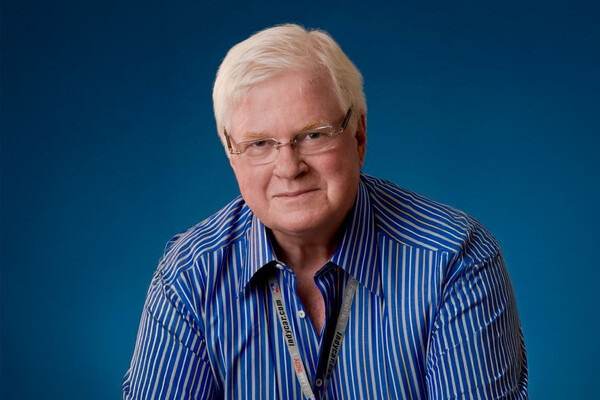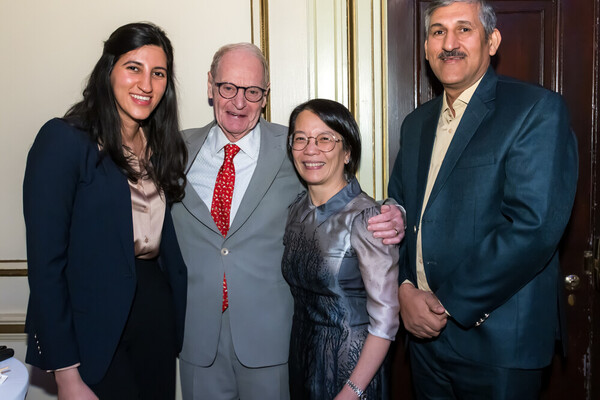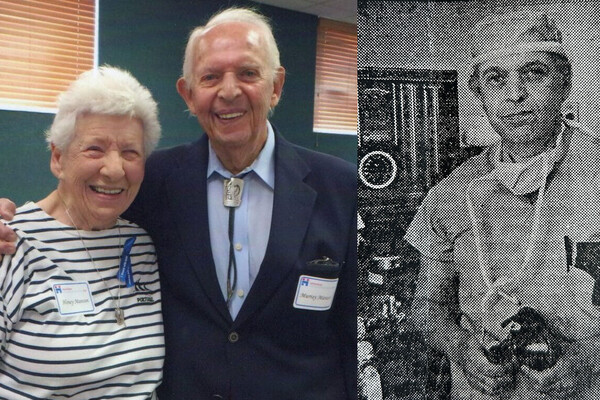Main Second Level Navigation
Breadcrumbs
- Home
- News & Events
- Recent News
- Connections Between Music and Math Resonate in Groundbreaking Epilepsy Research by Taufik Valiante
Connections Between Music and Math Resonate in Groundbreaking Epilepsy Research by Taufik Valiante
When Taufik Valiante was a child, his baseball coach’s son passed away from severe epilepsy.
“I think that left a pretty indelible mark on me,” says Valiante, an Arts & Science alum who earned his honours bachelor of science from University College in 1988 as well as a PhD in physiology in 1995 and his medical degree in 1997 from U of T.
Eventually, that experience in his youth led a sensitive, guitar-playing boy who hated the sight of blood to become a patient advocate, neurosurgeon and researcher studying the relationship between music and epilepsy.

Today, he’s researching the connection between music and epilepsy with amazing results. A few years ago, his research team at the Krembil Brain Institute published a study suggesting listening to a six-minute selection of Mozart’s K448, Sonata for Two Pianos in D major every day could reduce seizure frequency in people living with epilepsy by up to 35 per cent.
The research has since grown to examine thousands of compositions from various artists and cultures. “We're starting to expand this out really broadly and I have some collaborators now at the Max Planck Institute in Germany,” says Valiante.
“Music is a mathematical construct and we think there are specific patterns in certain types of music that cause the brain to be less likely to go into a seizure,” he says.
“Epilepsy has provided an incredible opportunity to study the brain and a lot of credit goes to the patients who are willing to participate in studies to help us understand these things.”
As Purple Day approaches March 26, Valiante recalls a career that started with successfully lobbying for a provincial strategy to improve care and recognition for people living with epilepsy, one of the world’s most common but stigmatized neurological disorders.
“In my house we were raised to be social activists,” he says.
“For people living with epilepsy, raising awareness is really important because the more people around them understand, the better their quality of life. And as a patient, you should hear the same thing whether it’s Purple Day, or visiting my office or on the internet, because it reinforces the importance of managing epilepsy,” he adds.
“People often talk about a cure, and we're all hoping and working for that. But in the absence of that, it’s about, ‘how do you manage it well?’ "
A senior scientist at Krembil and a neurosurgeon at Toronto Western Hospital, part of University Health Network, Valiante co-directs the Max Planck-University of Toronto Centre for Neural Science and Technology, and CRANIA (Centre for Advancing Neurotechnological Innovation to Application). He is also an associate professor of neurosurgery in U of T’s Department of Surgery at the Temerty Faculty of Medicine, with cross-appointments to the Institute of Biomedical Engineering, and Electrical and Computer Engineering.
He says his mother taught her children to “be good at the things we enjoy,” and he took her to heart. He often picks up his bass guitar to relax and create, even recently sharing tracks in an audio collaboration with a long-time musician patient.
Valiante had an epiphany moment about the relationship between math, physics and the brain in a class at University College with former professor Jack Dainty — a nuclear physicist turned pioneering plant biophysicist.
“That was among my most formative periods in my life. It was my third year and I was taking his plant membrane physiology course and it blew my mind that he could show you something physically exists just by using math and physics,” he says.
“By fourth year, I had submitted a proposal on how to use math and physics to study the brain. I got an award for it and that money supported research during the summer after graduating with my bachelor of science.”
Valiante says he encourages every student to be open to exploring new subjects and interests without always focusing on how it fits their career plans or transactional goals.
“None of us are smart enough to know how what we do today is going to impact us in the future,” he says.
“Don’t always expect something back except the experience itself. From a purely human point of view, the one behavior that can immediately increase positive emotion and happiness is giving. It benefits you as much as the people you help.”
What is Purple Day?
Purple Day is an international grassroots effort dedicated to increasing awareness about epilepsy worldwide. On March 26 annually, people in countries around the world are invited to wear purple and host events in support of epilepsy awareness. Last year, people in more than 85 countries on all continents participated in Purple Day. Canada is the only country in the world who officially recognizes March 26 as Purple Day through the Purple Day Act implemented on June 28, 2012.
News


